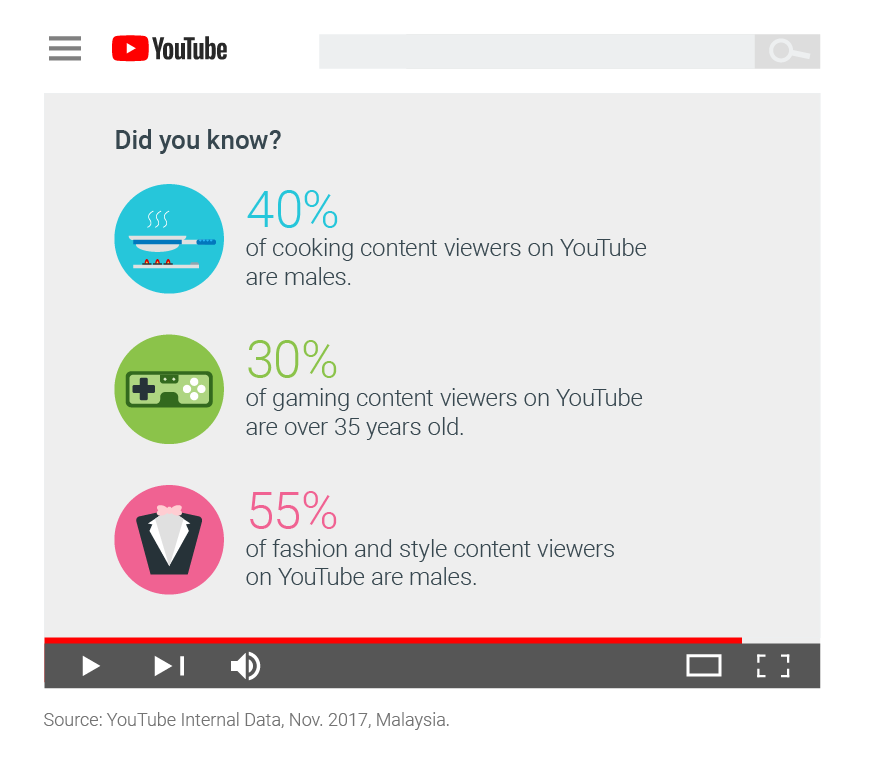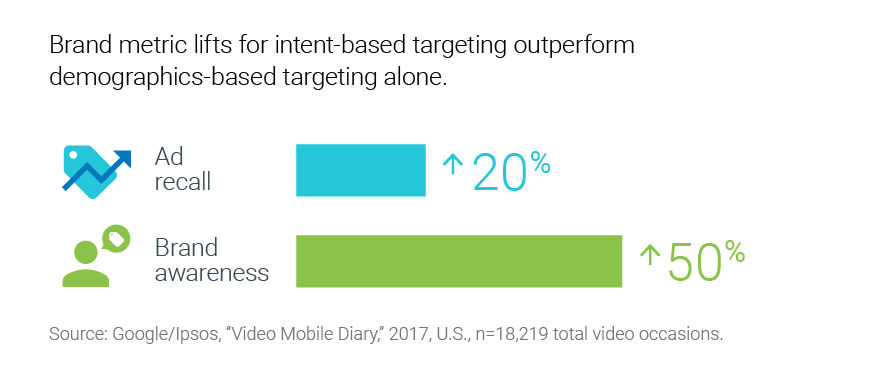- Demographics-based targeting (such as by age, gender, income) is unreliable.
- Targeting audiences based on their behavioral "intent" or affinity (such as what they watch, search, visit) gives marketers a more accurate picture of their audience.
- Intent-based targeting also allows for more relevant and customized creative messaging tailored to individuals.
Imagine a 45-year-old executive. Work is important to her, but equally important is her well-being. She has a passion for tennis because it taps into her competitive streak. She can afford premium racquets and the latest attire, and she runs through thousands of tennis balls every year. She fuels herself with great food and doesn’t feel guilty indulging in chocolate every now and then.
Many of us know someone like this. From a brand perspective, she is part of the target audience for a range of industries and categories. So which brands are marketing to her? Who is speaking to her when she craves her next box of chocolate or when it’s time to upgrade her racquet?
Surprisingly, no one. Not one brand is reaching her in these moments because she doesn’t fit the typical brief that defines a campaign by age group, stage of life, income, or locations. Within these antiquated parameters, we will seldom, if ever, address the true intentions of a potential customer.
Brands that want to win their next customer need to realize and respect their identities. Demographics are dead; this is the age of context and intent.
When demographics reigned supreme
In 1605, the first newspaper was printed in Germany, but it was 100 years later when the first advertisement appeared in the American newspaper Boston News-Letter1. From then on, consumer attention was owned by a handful of media channels, keeping the advertiser’s job fairly simple.
As TV and radio took off, marketers relied on demographics to define their audiences because they were the most readily available metrics. Panels and surveys were used to validate assumptions and draw correlations around media spend, but they were always lacking direct, real-time customer data around who saw their ads and took follow-up actions. In many ways, the tried-and-true approach that became an industry standard was merely statistically significant guesswork.
These strategies became ingrained in every marketing curriculum. There was no need to change the formula for success—it was straightforward and everyone understood it. But today, the always-connected consumer is constantly indicating what they’re interested in and what they aspire to do, creating millions of opportunities for marketers to speak to their ideal audiences in a more thoughtful manner.
Homing in on the right signals
Here’s what the old approach would look like in today’s world: A health and beauty brand is about to launch a new baby shampoo. Based on the standard playbook, the brand will prioritize 20-35 year-old females because they are the typical “new moms” who are in a middle income bracket and have at least a secondary school education. The brand will target these women across media channels, reaching as many of them as possible at the optimum frequency.
While this will drive results, they may not be optimal, leading to wasted media dollars. A fresh approach would toss out gender, age, education, and income and swap in signals of intent, such as people who watch parenting videos, search for parenting advice, visit family planning sites, and download helpful parenting mobile apps.
The power of intent
By targeting true intent-based signals, the health and beauty brand will shrink the number of females in the originally desired age bracket. However, it will improve its addressable audience by restricting targeting to only those who have provided clear indications that they’re in-market for baby-related products. What’s more, the brand will expand its reach by including other age groups and even males, who are just as likely to be looking for products for their children.
Demographics-driven stereotypes have been proven to be unreliable, leading to irrelevant ads that don’t win attention. In Malaysia, 40% of YouTube viewers of parenting topics are males and 50% of viewers are over 35 years old2. That means that a brand is missing at least 40% of their addressable audience with demographics alone, and that’s before accounting for those who aren’t mothers and wouldn’t find the ad relevant.

Pulling it all together
The power of intent-based signals goes far beyond optimizing media spend. According to Ipsos, relevance and personalization are the top attributes associated with video ads that earn attention3. Naturally, when people feel like they’re being spoken to directly, the ad will resonate with them more than a generic ad because they feel understood.

Brands rethinking their targeting strategies are already seeing the benefits: YouTube data indicates that campaigns using intent-based targeting have 20% higher ad recall lift and 50% higher brand awareness lift compared with campaigns that only use demographic targeting4.Combining increased intent-driven relevance with YouTube’s primetime reach5 and industry-leading viewability and audibility at 95% each is a world-class formula for earning valuable attention.6
A new golden age for brands
We live in complex times, and at the pace that data is being produced, they will not get simpler. Brands have a golden opportunity to stand out in the crowd, but they need to invest time and resources into understanding their true audiences and upskill their teams to build strategies based on this new understanding.
Today’s consumers expect brands to understand them better. The onus is on us. Our customers are the sum of their intentions, expressed everyday by where they go, what they watch, what they search for, and what they aspire to achieve. The age of demographics is dead. Welcome to the age of intent.







